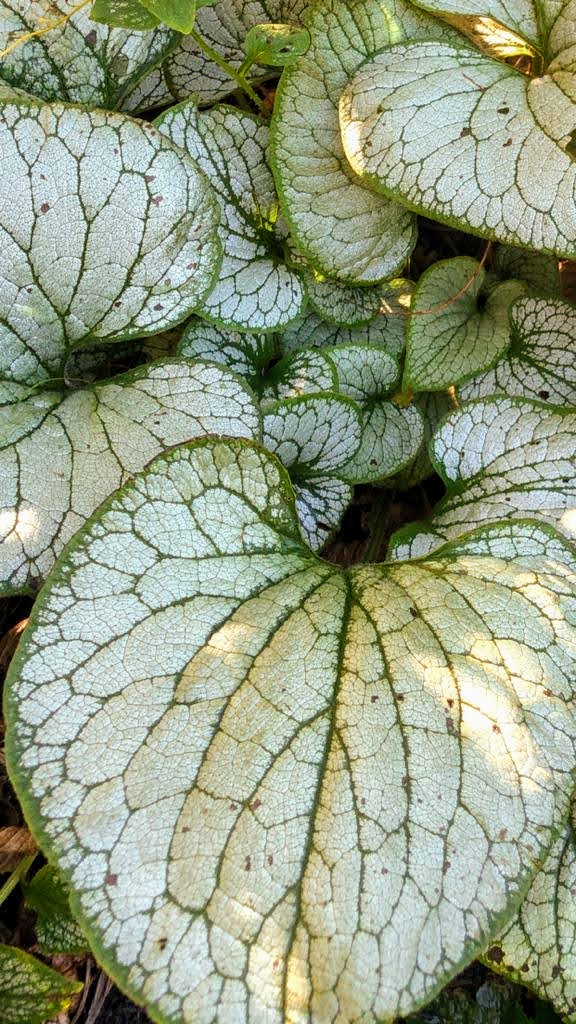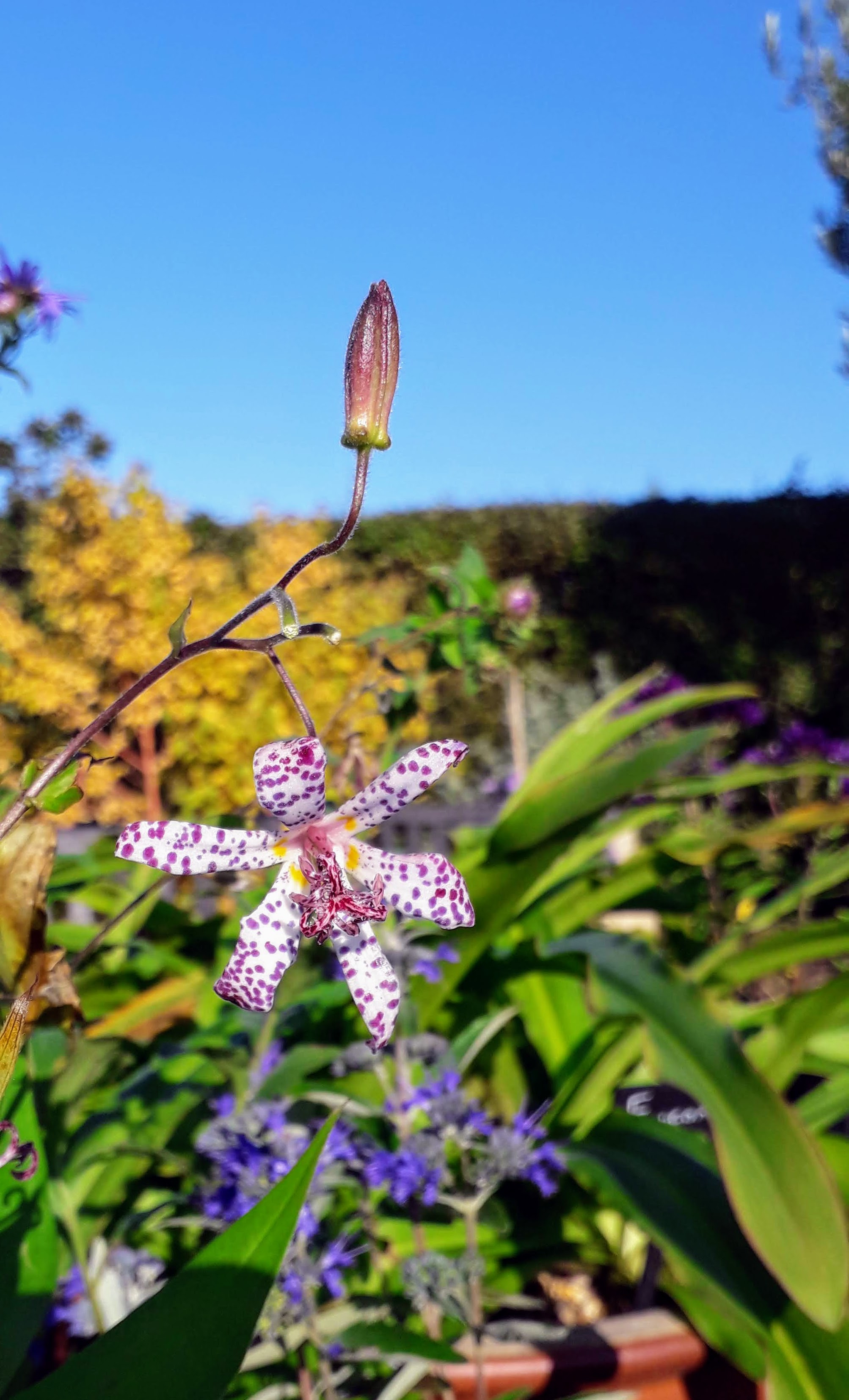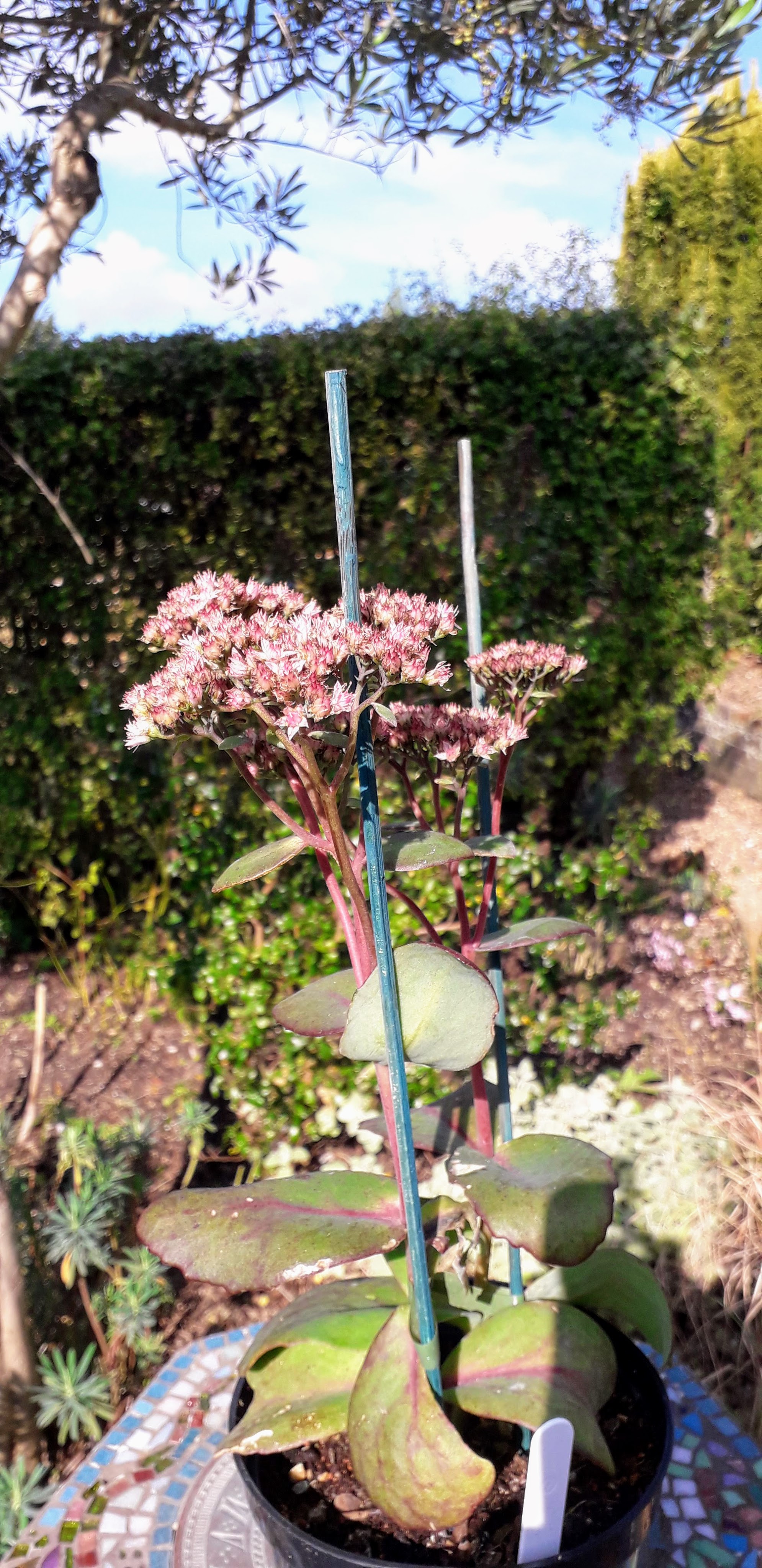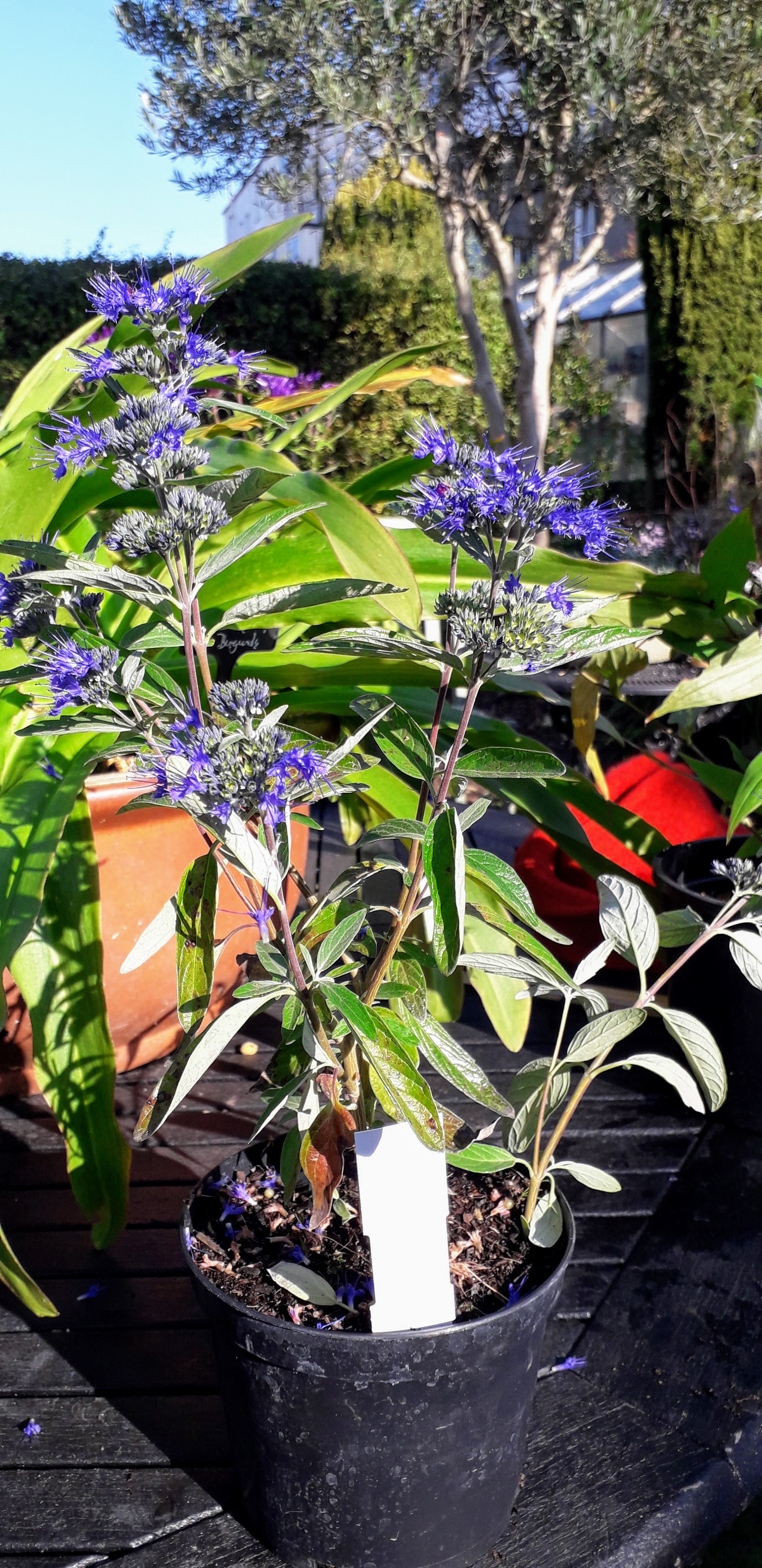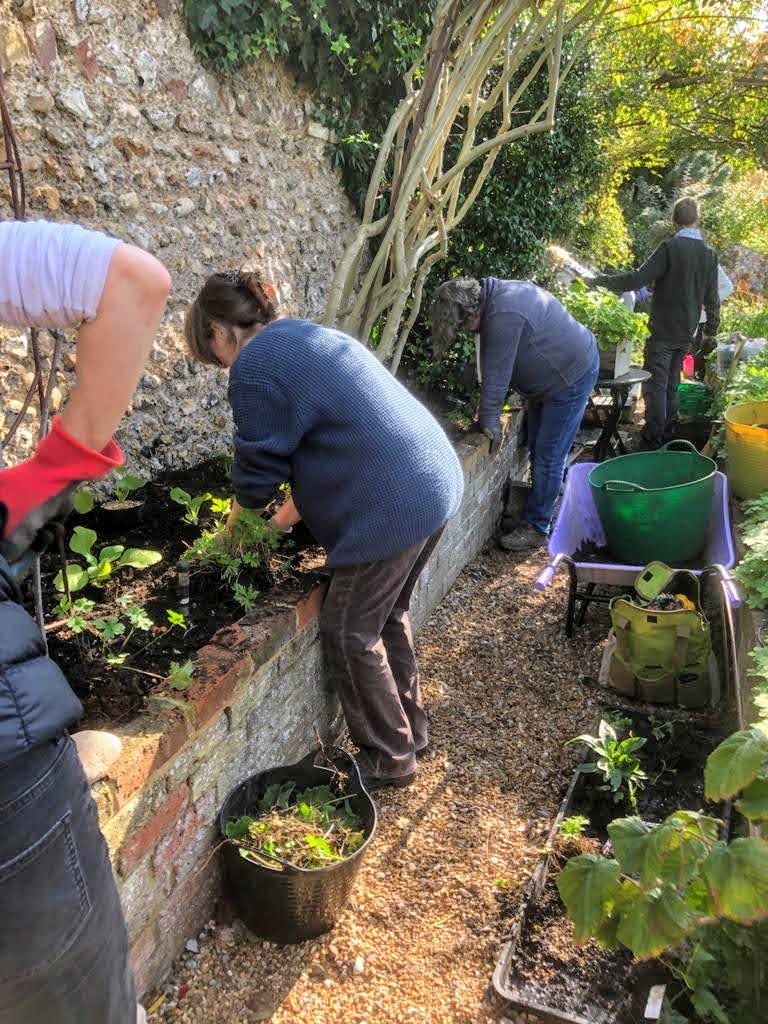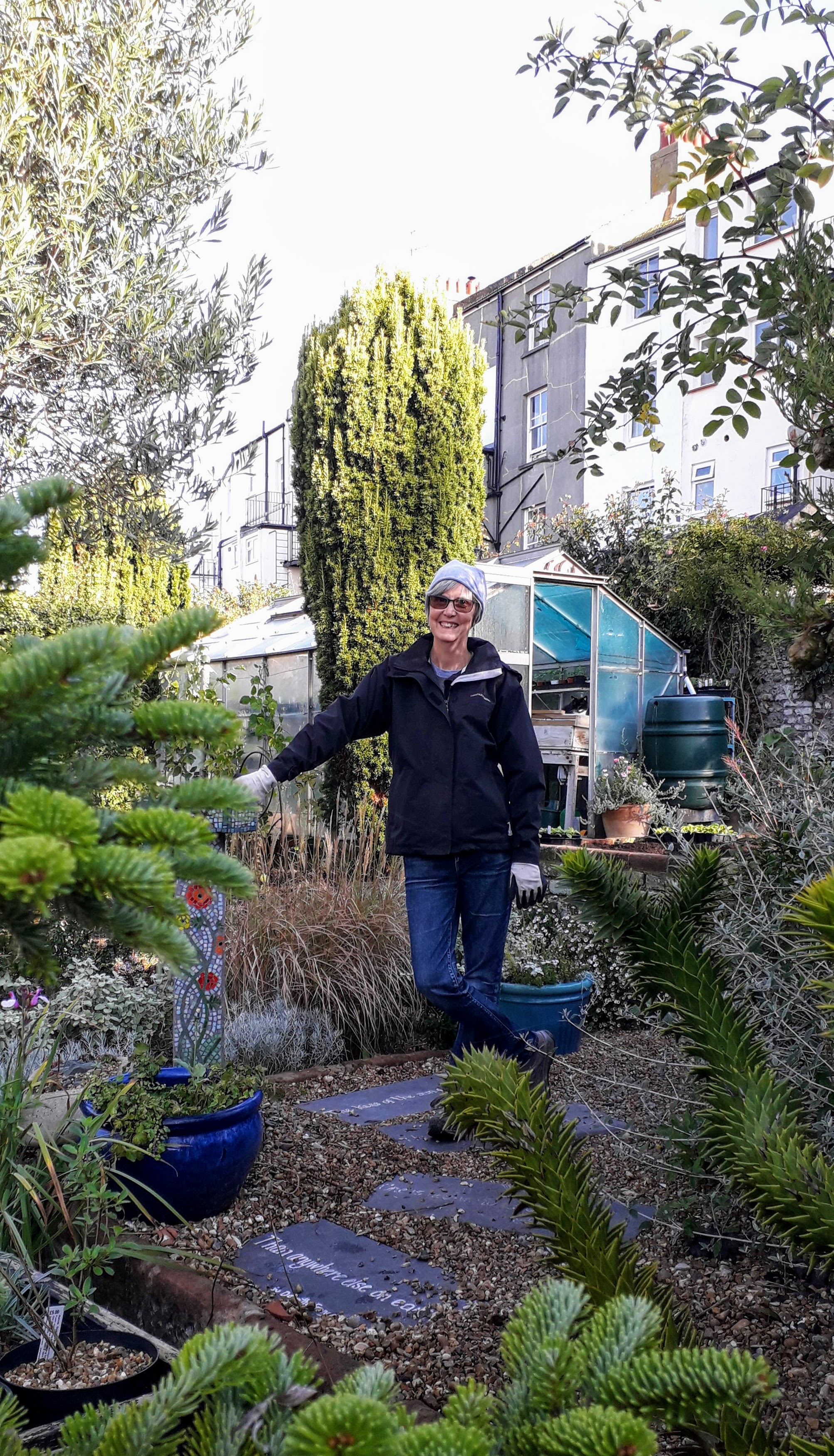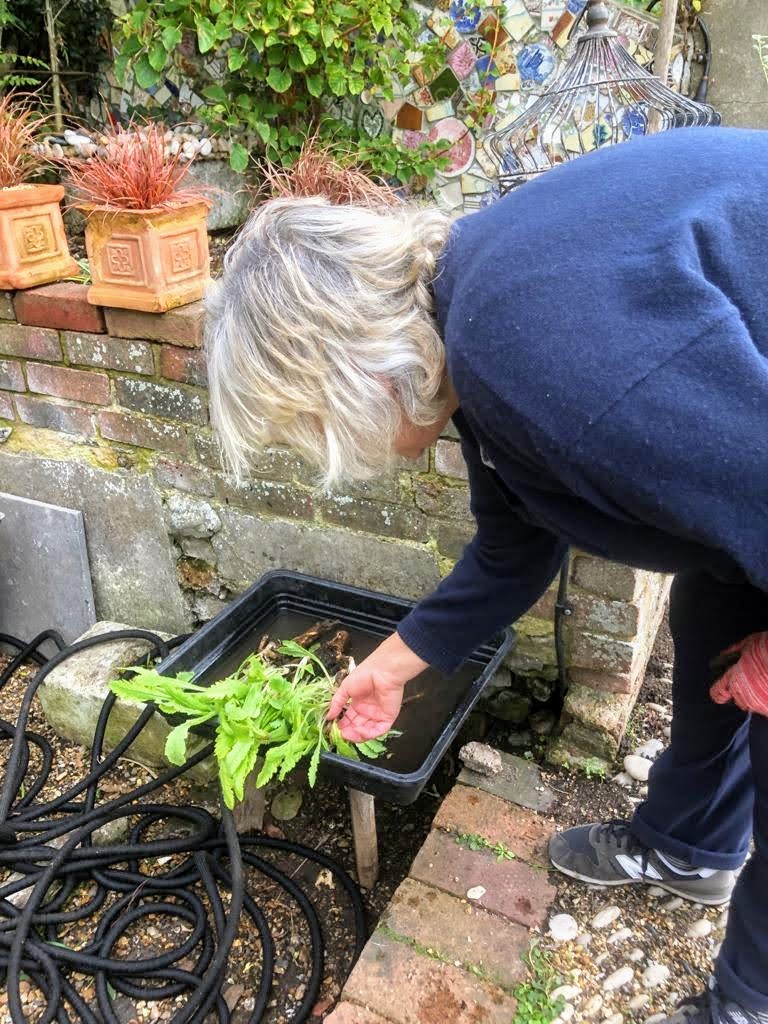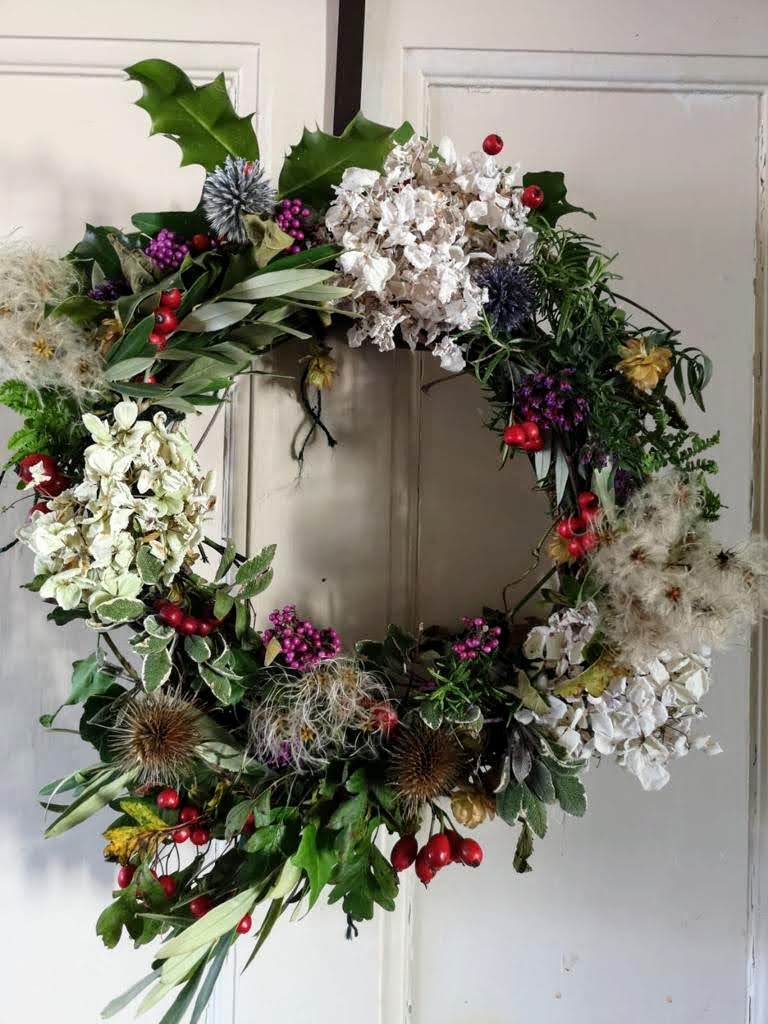Question not the quality of these queenly quinces. They qualify as quite the best quartet in the garden today.
The tree from which they come, is Cydonia oblonga, currently bearing quantities of quinces; when mature, they turn a bright golden yellow. Quintessentially autumnal.
And, speaking of autumnal – this month, the RHS magazine features Asters in all their glory, with recommendations from top plantspeople.
Plant ident.
Symphyotrichum novae-angliae ‘Helen Picton’
One of the recommended varieties in The Garden is this magnificent semi-double variety, named for Helen Picton, the holder of a Plant Heritage National Plant Collection of Aster and related genera at Old Court Nurseries. In September/October, rich, violet-purple flowers adorn this upright plant which needs little in the way of staking. Plant in full sun. 1.2 m tall. A stunner and holder of an A.G.M.
Brunnera macrophylla ‘Silver Heart’
A good clump-forming hardy herbaceous perennial for shade, with heart-shaped silver leaves which are edged with green. Delicate deep blue flowers appear in the spring – reminiscent of Myosotis (Forget Me Not). The soil needs moisture and good preparation for this to flourish – improve it with compost and leaf mould. Good ground cover and lovely in a woodland garden. Another good variety is ‘Jack Frost’.
Tricyrtis formosana ‘Empress’
Its botanical name looks much more impressive than its common name: Toad Lily. Its big virtue is its ability to thrive in dry shade. Small, white lily-like flowers are splashed with purple spots and emerge from July -September. A Japanese species, it’s hardy and can be propagated by division in the spring. h. 0.65 x w. 0.40 m
Hylotelephium ‘Matrona’
‘Sedum’ was too simple a name for this garden stalwart, so the Botanical Boffins decided that ‘Hylotelephium’ would be more challenging for the poor gardener. And it is. Another hardy herbaceous perennial, the Stonecrop is a magnet for bees and hoverflies, provides a good splash of autumn colour and the seed heads give continued interest through the winter. The succulent dark leaves are held on pale magenta stems; flower heads are soft pink becoming dark red with age. Needs sun.
Giving these plants the ‘Chelsea chop’ in May (when the Chelsea Flower Show is held) helps guard against them becoming too big, flopping about and exposing their midriffs (I ask you). For goodness sake, cut one in three stems back by at least two-thirds to keep them compact and save them from embarrassment. A.G.M.
Caryopteris x clandonensis ‘Dark Knight’
A terrific deep blue form of Caryopteris, loved by bees and butterflies. An autumn flowering shrub, good in the garden and as a cut flower. Needs sun. Glaucous (not raucous) foliage. Cut back to a shaped framework in March. Grows to around 1 m. and can be propagated from softwood, semi-ripe or hardwood cuttings. Very obliging of it.
Jobs for the week
Complete picking tomatoes if not already done
All can be used in different ways
Prepare and plant the beds underneath the arches
First, the beds are weeded
and plants are removed and stored for use elsewhere
The soil is improved with compost –
combined with leaf mould and some pelleted chicken manure
by the barrowload
It’s all about teamwork
Smile, team!
Hollyhocks are planted towards the back of the bed
and white foxgloves are added as well.
Hardy geraniums go in. Good ground cover and pretty
Plant bulbs deeply, in groups of 3, 5 or 7
Narcissus ‘Jack Snipe’ and species Tulips will be lovely
A kind person organises and delivers all the planting material
Put your best foot forward and it will all get done…
Ah.
Take root cuttings of Papaver orientalis. New plants for free!
Homework
Read a colleague’s essay on the subject of soil. (It’s filthy.) We need to gen up on this subject – it’s central to everything that goes on in a garden. What are the different types of soil – sand, silt, peat, chalk or loam? How can you test for the pH value of your garden’s soil? How can one go about improving soil? What sort of plants are best grown in these different situations?
Questions will be asked.
And answers expected
Now, who is this essay writer?
Who’s responsible for all this extra work and stress?
Hmm. Someone’s looking suspiciously innocent.
Paulownia tomentosa, the Foxglove tree, gradually losing its stunning heart-shaped leaves. Perfect against a literally sky-blue background
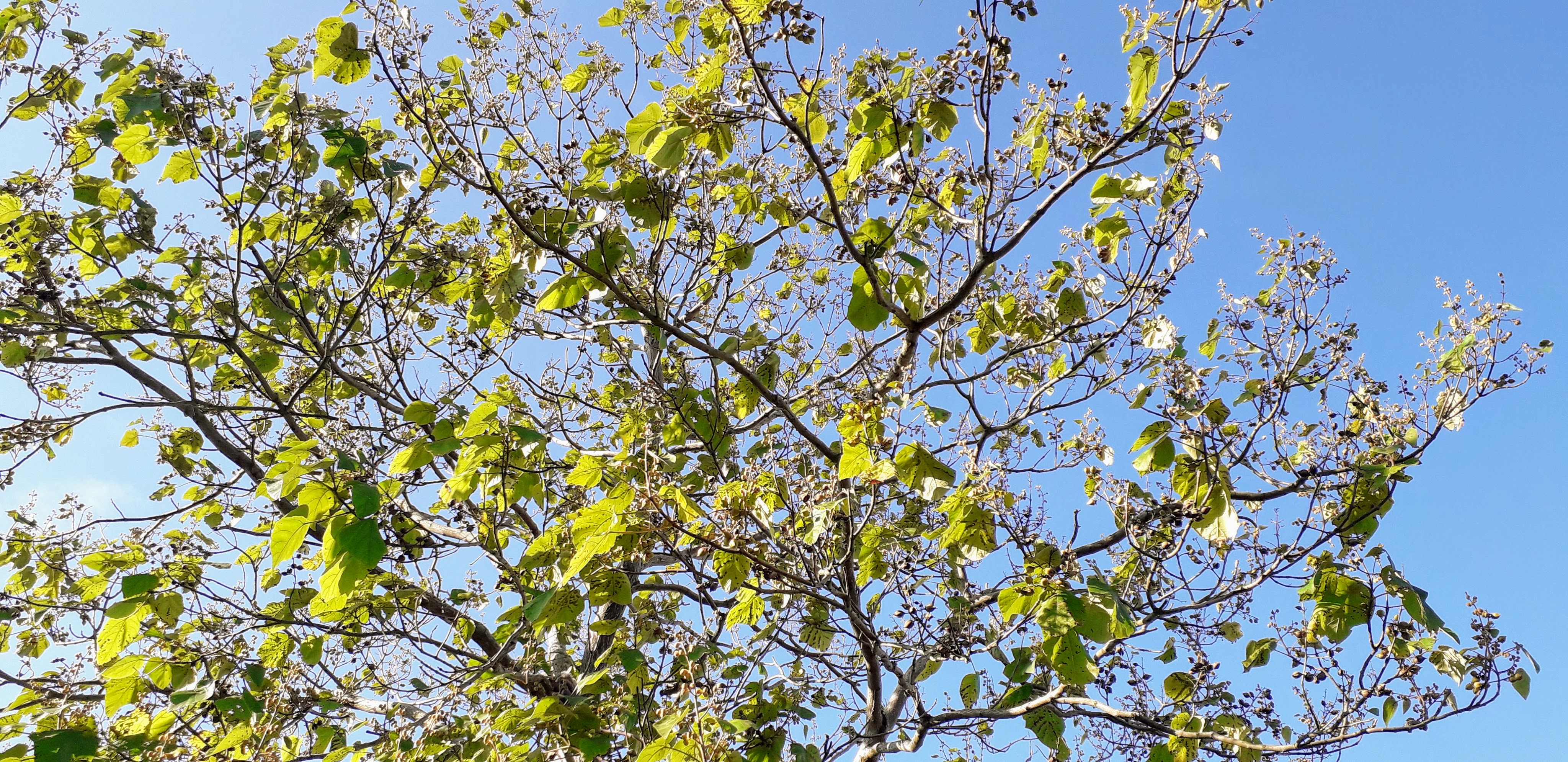
Don’t forget the homework!



